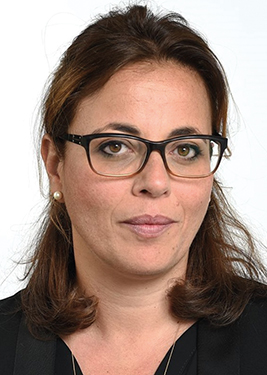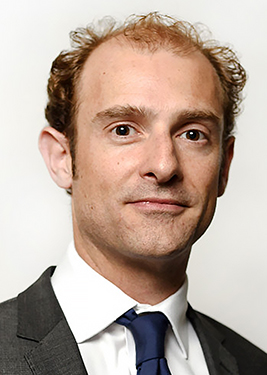Natixis redefines structured products with green OAT ‘repack’
Natixis is planning to double revenues from its sustainability business by 2020 via the ‘greening’ of financial products, such as its repackaging of a French government bond. Edward Russell-Walling reports.
At Natixis, socially responsible investment (SRI) research, renewable energy lending and green index-based investment solutions have coalesced to form a unified green business strategy. The French investment bank’s green and sustainable hub (GSH) is integral to that strategy and has helped it to notch up various green firsts in products such as commercial mortgage-backed securities (CMBS), real-estate loans and structured notes.
“Over the past five years, we confirmed our belief that more than just green research was required,” says Orith Azoulay, previously head of SRI research and now global head of GSH within Natixis corporate and investment banking (CIB). “We had long been a leading player in renewable energy financing, and subsequently expanded the green theme through bond origination and equity derivatives – notably in indices.”
In 2015, COP 21 – the 21st Conference of the Parties to the UN Framework Convention on Climate Change, hosted in Paris – accelerated these developments significantly. “In 2016, the decision was taken to make green business one of CIB’s three strategic pillars,” says Ms Azoulay.
Business pillars
Designed to differentiate Natixis by developing additional expertise, those ‘pillars’ are: to become a reference bank for corporates and investors in energy and natural resources, aviation, infrastructure, real estate and hospitality; to increase its client footprint with insurers and financial sponsors; and to become a reference bank in green business. In 2017, the bank said it aimed to double green business revenues by 2020.
Also in 2017, GSH was created as a dedicated cross-asset task force and since then, “pretty much all” of CIB’s business lines have been getting involved, according to Ms Azoulay. GSH is an ‘enabler’ and is based on several convictions. One is that the green idea is asset-class-agnostic. Another is a desire for green integrity, whereby the bank practises what it preaches. Two years ago, the bank stopped all lending to the coal industry worldwide. More recently it has promised not to finance oil extracted from tar sands, or oil exploration and production in the Arctic.
The team works with ‘green captains’ in each of the bank’s business lines. There are more than 100 of them around the bank, acting as ambassadors for green revenue generation efforts. They work to foster innovation and to make sure their clients are appropriately briefed. “When we advise clients about green funding and investment solutions, we structure the green element of each transaction,” says Ms Azoulay. “We also ensure that green is green, while meeting clients’ needs.”
The GSH team itself now has six people, which should grow to 10 or 11 by the end of 2018. They include Ms Azoulay plus several cross-asset originators, dedicated to advising clients on matters green while originating green bonds, loans and securitisations. There are currently two such originators in Europe and one in Asia, with a further appointment due to be made in Europe and another in the US.
Two more team members will constitute a ‘centre of expertise’ to concentrate on research and development, publish thematic material and develop impact measurement tools. The team’s first flagship publication, on sustainable development goals, is due by the end of September.
Incorporating sustainability
A third element of GSH is investor-facing, with one team member acting as investors’ eyes and ears across the different asset classes, and ensuring the syndicate knows exactly where the green demand is. “Today, there is an ecosystem of favourable government policies, including mandatory environmental, social and governance disclosure requirements for institutional investors,” says Thomas Girard, product specialist in charge of GSH business development with investors. “With more stringent regulation on the way, notably in Europe, this is driving investors to incorporate sustainability into their investment process.”
The fourth team function within GSH is global market research. Unlike the other three, which are essentially internal, this is more outward facing, with two people producing independent research and working as partners to the structured product engineers.
This year the bank introduced a ‘green weighting factor’ at group level, co-led by GSH and the corporate social responsibility team. This is an in-house capital allocation mechanism to promote finance deals that have a positive impact on the climate and the environment. It does this by adjusting the expected profitability threshold on a transaction according to its effect on climate change.
The scheme uses a seven-colour coding system, with three green, one neutral and three brown labels. In descending order of desirability, each will apply a different multiplier to a proposal’s internal risk-weighted asset allocation. Natixis is already piloting the system in the automotive, real estate, electricity and mining sectors. The weightings will gradually apply to all new asset or project finance deals, and to corporate loans, across all of the bank’s business sectors worldwide.
Greening their products
With the encouragement of the green captains, the bank’s business lines have been coming up with new ideas for ‘greening’ particular instruments. For example, Natixis worked with Ivanhoé Cambridge and Callahan Capital Properties to issue the first green CMBS. Backed by 85 Broad Street in downtown New York, a $72m green-specific tranche partly refinanced a $358.6m first mortgage loan provided by Natixis.
The building is one of only seven in the city to have the highest Leadership in Energy and Environmental Design (LEED) certification. The notes were given a positive opinion by Oekom Research, a leading sustainable investment rating agency, and were oversubscribed by major investors in the US and abroad.
Ivanhoé Cambridge has also collaborated with Natixis Assurances to bring about Europe’s first green-labelled commercial property loan. The two are partners in the Duo Towers project, on the edge of the extensive Paris Rive Gauche development. The two Duo buildings, which aim to achieve the highest LEED-certified energy performance, raised a €480m loan in November 2017 from a syndicate including Natixis, which was also the green certification agent. The loan was awarded the climate bond certified label by the Climate Bonds Initiative, with standards again attested to by Oekom.
Earlier in 2018, Natixis issued the world’s first green fixed-income ‘repack’ structured note. The €50m note uses a derivative component to create an exposure to an underlying asset, in this case the French government's €7bn green bond (the world's largest), due in 2039. This repack is the first green structured note collateralised by a single green bond. Until now, only the World Bank and the European Investment Bank have issued green equity-linked structured notes.
Vigeo Eiris provided the second party opinion for this first green structured OAT. The aim is to create a synthetic debt not directly available in the market, with a call option sold by the investor to the special purpose vehicle. The investor benefits from a significant pick-up due to this optionality and from favourable Solvency II treatment, Natixis says.
Redefining ‘green’
In a note on the repack, Bloomberg Green Energy Finance said it did not have “a governance process” to review green derivatives, but it acknowledged the significance of the launch. “Though small, the sale of a green derivative will disrupt the status quo of the green bond market, because green bond guidelines and principles do not strictly cater for structured notes,” said Bloomberg. “The green fixed-income community might have to reconsider what they define as green in order to accept these hybrid cousins into the green clubhouse.”
Ms Azoulay says such products add value in at least two ways: by adding liquidity to the green market in terms of secondary volumes, and by bringing into the market a number of investors for whom, until now, no green products were available.
Feedback from investors has been positive and the product has generated a high level of interest. The OAT 2039 green repack, Ms Azoulay assures, is only the first in a series of similar green structured products.




